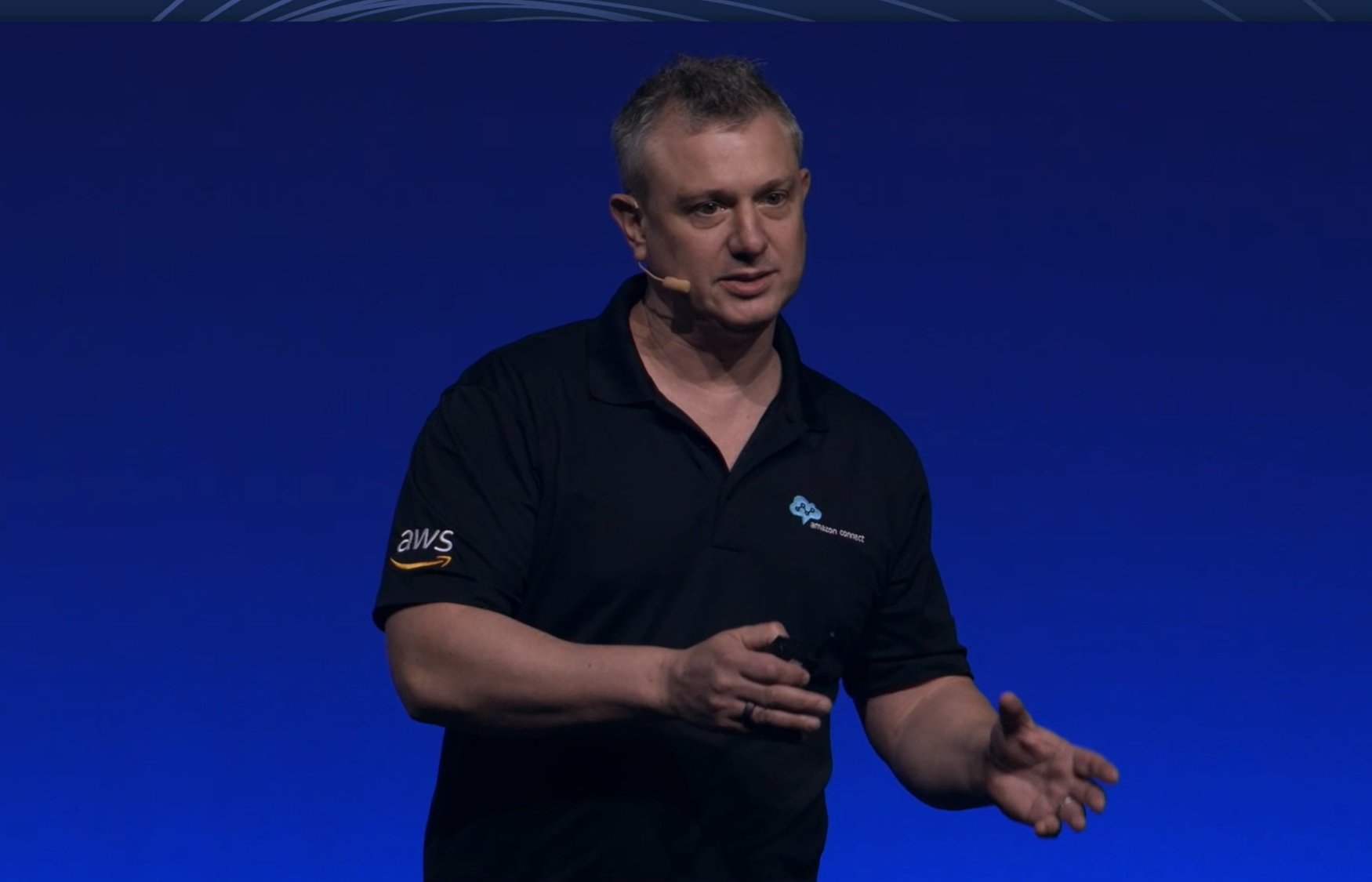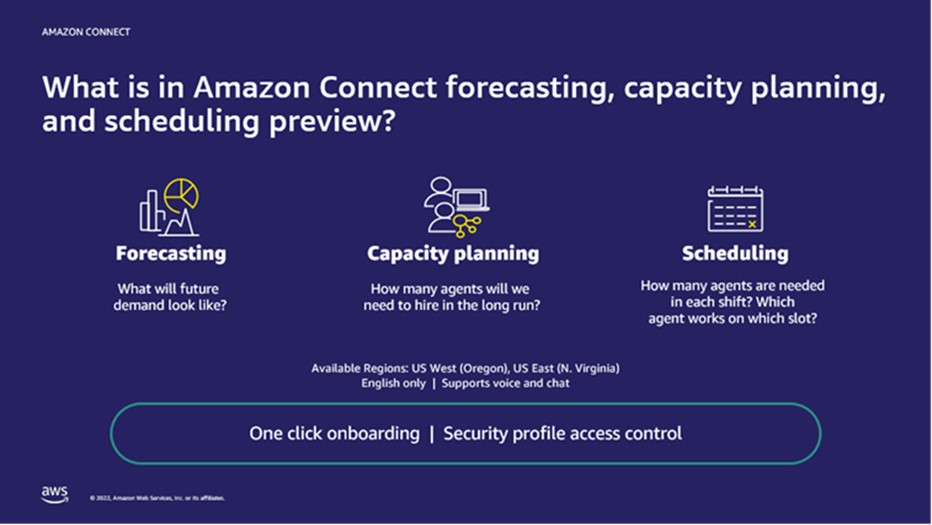During the AWS keynote at Enterprise Connect today, Pasquale DeMaio, general manager for Amazon Connect, announced the newest functionality being for its CCaaS solution, Amazon Connect. Amazon Connect, which debuted at the show just five years ago, will now offer built-in forecasting, capacity planning, and scheduling features. Currently available in preview, the workforce management capabilities will become generally available later in 2022.
When I heard the news during a pre-briefing earlier this month, my response was immediate and audible. “Wow. Wow.” Workforce optimization (WFO) has increasingly become a core component of a total contact center solution. It is not surprising that as early as mid-2019, the Amazon Connect team recognized the value customers would derive from a single CCaaS-WEM solution and started a journey to re-imagine WFO.
The graphic below answers the simple question of what capabilities forecasting, capacity planning, and scheduling deliver. Contact centers have the challenge to predict and match the number of agents they need to have on hand to respond to queries with the expected flow of interactions from customers (or partners, employees, citizens, patients, etc.). Scheduling is about short-term planning; forecasting and capacity planning address longer-term needs, often related to hiring.
Tom Johnston, principal product manager on the Amazon Connect team, has spent the last two-plus years working on the workforce management project. In the pre-briefing, he answered additional questions, including what this new set of Amazon Connect capabilities is called?
“We are calling these capabilities forecasting, capacity planning, and scheduling since they are built at the core of Amazon Connect. We are doing this because we believe that they need to be at the heart of everything that contact center managers need to run their organization” Johnston explained.
I had the opportunity to speak to Amazon Connect customer Bryan Carey, head of operations & analytics at
Traeger, Inc. at AWS re:Invent in November 2021. He told me he is always interested in participating in early trials of new Amazon Connect capabilities. I was not surprised then to see Traeger described as one of the beta customers for Amazon Connect workforce management capabilities.
“We have complete visibility to manage our workforce and optimize our contact center across both internal and outsourced partners, all within Amazon Connect,” Carey said in today’s announcement. “The machine-learning (ML) powered forecasting, capacity planning, and scheduling capabilities in Amazon Connect helped us improve our forecasts and staffing accuracies by over 5%. Our agents will now have a more consistent workload and more time for training, all while delighting our end-customers.”
Refer to the
blog posted by AWS for the details on the new capabilities. The blog also offers several screenshots of the various applications, and how they can be easily invoked and customized by users.
What do these new capabilities mean to the CCaaS market? They reinforce the view that CCaaS and WEM are inextricably linked. Some – typically very large companies – will continue to choose best-of-breed WEM portfolios from the category leaders, e.g., NICE, Verint and Calabrio. Most, however, will choose their CCaaS at least partially based on how robust the native WEM portfolio is. DeMaio ended his keynote by reinforcing AWS’s commitment to two of these WEM partners, Verint and Calabrio.











